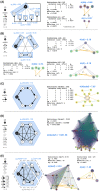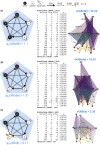Integrated information theory (IIT) 4.0: Formulating the properties of phenomenal existence in physical terms
- PMID: 37847724
- PMCID: PMC10581496
- DOI: 10.1371/journal.pcbi.1011465
Integrated information theory (IIT) 4.0: Formulating the properties of phenomenal existence in physical terms
Abstract
This paper presents Integrated Information Theory (IIT) 4.0. IIT aims to account for the properties of experience in physical (operational) terms. It identifies the essential properties of experience (axioms), infers the necessary and sufficient properties that its substrate must satisfy (postulates), and expresses them in mathematical terms. In principle, the postulates can be applied to any system of units in a state to determine whether it is conscious, to what degree, and in what way. IIT offers a parsimonious explanation of empirical evidence, makes testable predictions concerning both the presence and the quality of experience, and permits inferences and extrapolations. IIT 4.0 incorporates several developments of the past ten years, including a more accurate formulation of the axioms as postulates and mathematical expressions, the introduction of a unique measure of intrinsic information that is consistent with the postulates, and an explicit assessment of causal relations. By fully unfolding a system's irreducible cause-effect power, the distinctions and relations specified by a substrate can account for the quality of experience.
Copyright: © 2023 Albantakis et al. This is an open access article distributed under the terms of the Creative Commons Attribution License, which permits unrestricted use, distribution, and reproduction in any medium, provided the original author and source are credited.
Conflict of interest statement
I have read the journal’s policy and the authors of this manuscript have the following competing interests: G.T. holds an executive position and has a financial interest in Intrinsic Powers, Inc., a company whose purpose is to develop a device that can be used in the clinic to assess the presence and absence of consciousness in patients. This does not pose any conflict of interest with regard to the work undertaken for this publication.
Figures








References
Publication types
MeSH terms
LinkOut - more resources
Full Text Sources
Miscellaneous

